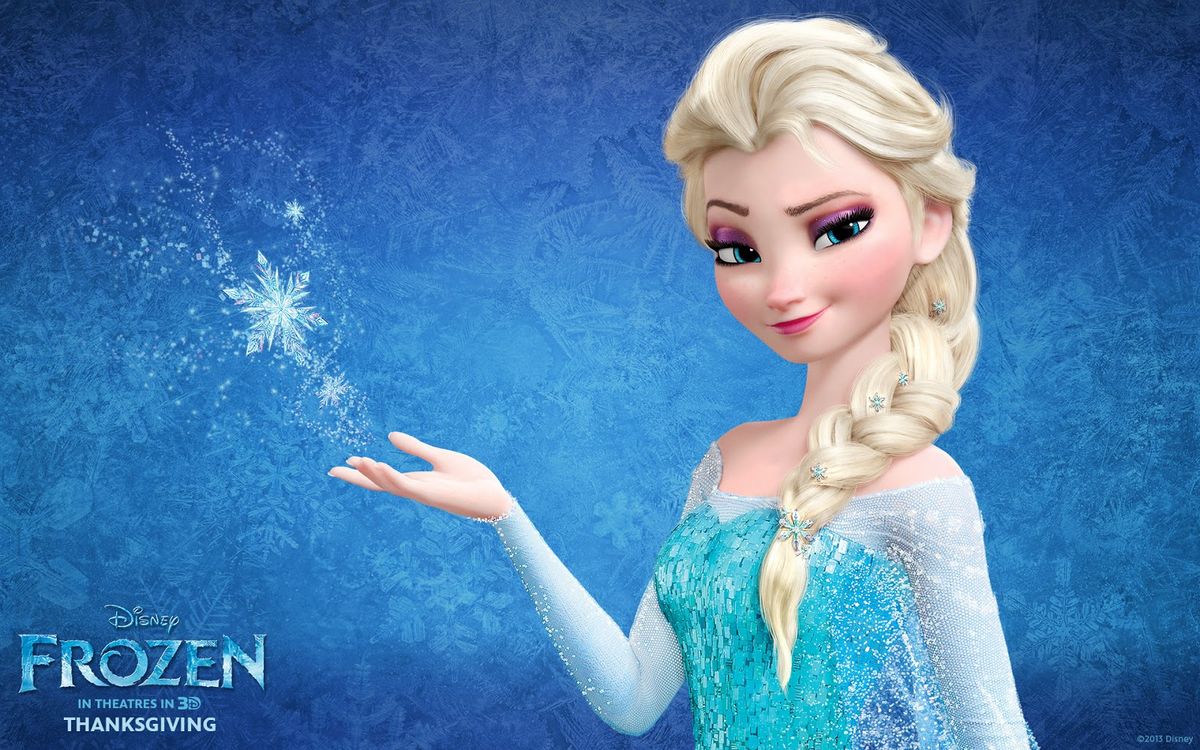Disney Breaks the Ice With “Frozen”

I remember for about 18 months while I was five and six, I made it a point to watch “The Lion King” at least once a week. When I realized just how excessive this pre-adolescent binge watching was, I felt sorry for all the people who had to watch with me to make sure the VHS worked. This person was usually my mom. Recently, my mom reminded me of these frequent screenings. But, instead of attempting to jokingly commiserate with my father or embarrass me in front of my younger sister (both of whom sat through Simba’s journey several times), my mom said that watching Disney with me was one of the ways she felt most connected to me during my childhood.
Movies that connect us are rare. But Disney, from my five-year-old self to my sister to my grandparents, seems to have a special knack for doing so. Let’s be honest here: who among us hasn’t had a Disney themed party, costume or movie marathon while at college? Since you’re reading a review of the movie “Frozen” well into the second paragraph, I’ll just assume we’re on the same page.
“Frozen” is a beautiful movie that everyone should go see. Firstly, this is Disney’s biggest success since “Tangled.” It’s already being made into a Broadway musical. After the myriad of sequels both good (“Monsters University”) and mind-bogglingly idiotic (“Cars 2” where all the cars were spies for some reason), “Frozen” has restored my faith that Disney still has imagination.
The story starts simply enough. The young princess of Arendelle, Elsa (Idina Menzel), has the magic ability to create ice and snow. While playing with her younger sister, Anna (Kristen Bell), Elsa accidentally misfires and her royal parents rush Anna to the trolls, who both heal her and remove her memories of magic. To keep both sisters safe, the King and Queen close themselves off in their castle and tell Elsa to keep her powers hidden. The sisters grow up isolated from each other with Anna never understanding why, which is only worsened when their parents die at sea (classic Disney).
Years later, during Elsa’s coronation, she is fearful of her secret being revealed as she still cannot control her powers. Naïve Anna is just ecstatic to be allowed outside of the palace gates and stumbles upon Prince Hans of the Southern Isles (Santino Fontana). Anna believes she’s finally found true love and promptly decides to get married (again classic Disney). Forbidding the marriage, the new queen is unable to control herself and accidentally shows Arendelle her powers and runs away. Anna then goes out to find her sister, bring her back and end an eternal winter that’s fallen with the help of an attractive ice-collector Kristoff (Jonathan Kroff), his reindeer Sven and their snowman brought to life. Meanwhile, Prince Hans is left in charge and may prove that true love doesn’t grow in a night.
With a cast cherry-picked from Broadway (and with the film being adapted), it’s not hard to tell that the music in “Frozen” is second to none. While “Let it Go,” has been by far the most popular score, the whole repertoire and cast shines in every performance. My favorite, frankly, is “Fixer-upper,” which is sung by a bunch of trolls. My biggest complaint with the music, in fact, would be that some amazing talent, like Fontana and Groff, got at most one song. The shining points in a musical centering on sisters are indeed the duets between Anna and Elsa. Menzel and Bell harmonize beautifully and each song that features them really does reflect the conflicting personalities and emotions running throughout the film. I’ll finish by saying the soundtrack alone is worth the ticket price.
Yet, what’s so special about this movie doesn’t lie in the typical Disney faire. The animation is beautiful. The actors are big names. The songs are incredible. But, for all the “classic Disney” moments that seem to be in this film, “Frozen” is seemingly committed to circumventing the upsetting norms that plague the genre. Rather than the stereotypical evil queen, for example, the “villain,” in this case Elsa, is relatable as she is simply confused as to how to control herself. I’ve heard Elsa’s character and the song “Let it Go,” be praised as a parable for introversion, LGBT awareness and (most convincingly to me) hiding mental health issues.
Especially as a model for young girls, Disney’s latest effort represents a massive leap forward in its feminist viewpoint. The typical Disney movie focuses on a prince “saving” a helpless damsel or a princess waiting to be saved. Both end in true love and happily ever after. Both are also an unrealistic standard that fosters the erroneous notion that women need happy marriages with men to be happy.
While the set-up of “Frozen” may seem like the same old thing and the plot does focus heavily on true love, this is a movie about the bond between sisters and that true love can be found in all relationships. In fact, (this calls for a spoiler alert), Prince Han’s ultimate betrayal and Anna’s sacrifice to save Elsa’s life completely circumvent the traditional narratives. “Frozen” features two independent and powerful women who are willing to do anything for their true loves: each other.
Ultimately, the brilliance of this film’s feminist message lies in the initial acceptance of typical Disney tropes only to circumvent them entirely through clever twists, strong writing and beautifully developed characters. “Frozen,” in many ways, represents a rebirth and reimagining of the Disney brand. Movies like this are rare but, if this subversion of the typical myth continues, I will be more than happy to connect with my children one day with Disney just like I did with my family.





Comments ()